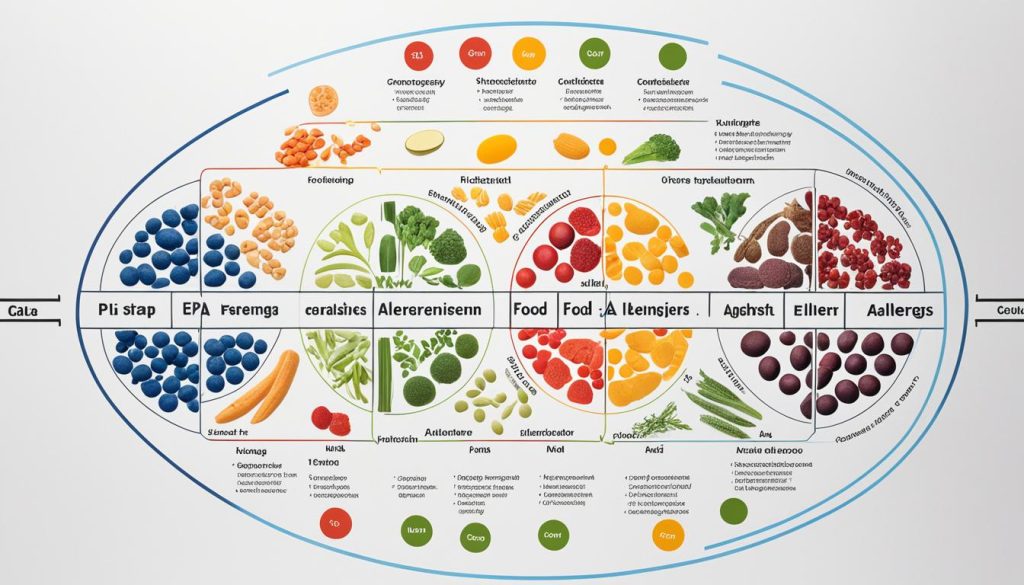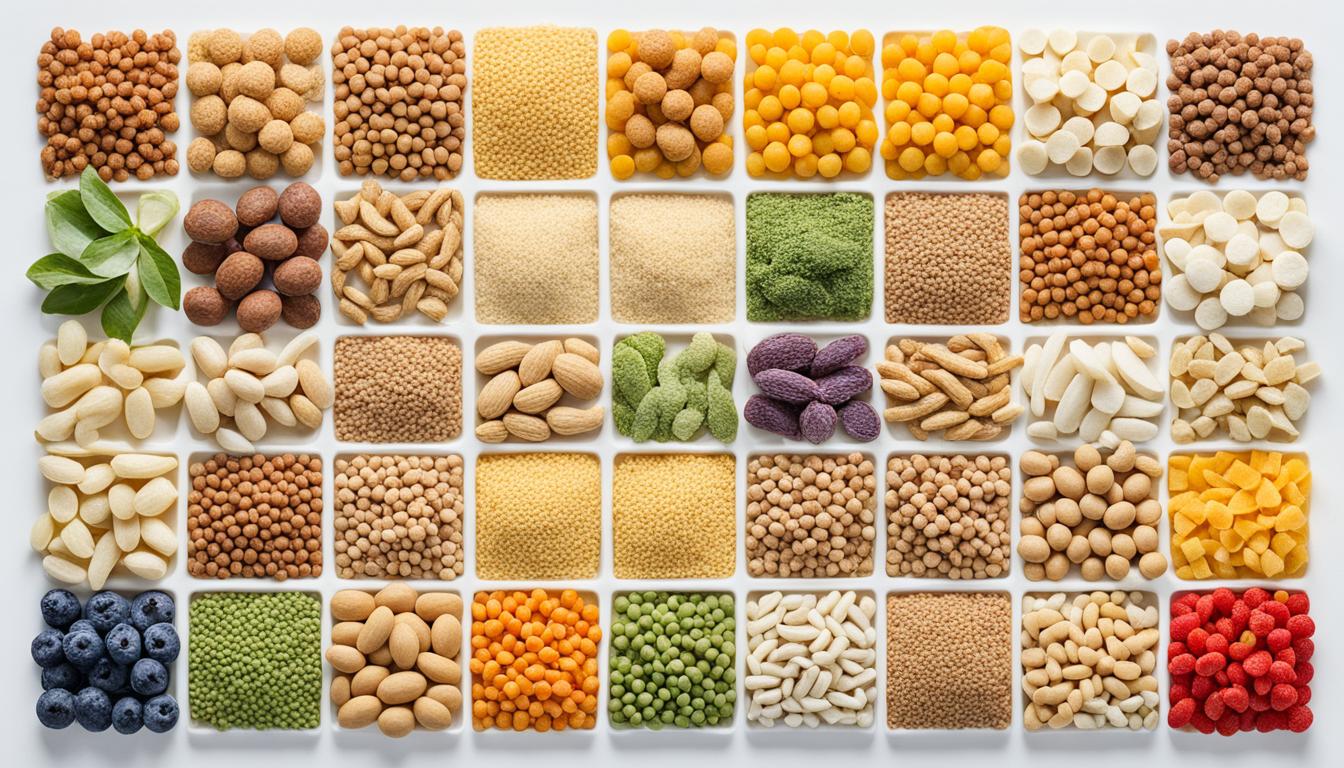Under the allergen labeling requirements of the FD&C Act, a “major food allergen” is an ingredient that is one of the following six foods: milk, egg, fish, crustacean shellfish, tree nuts, or peanuts. It can also be an ingredient that contains protein derived from soybeans or wheat. The FDA enforces the labeling of major food allergens to help allergic consumers identify foods or ingredients that they should avoid. The labeling requirements include listing the allergen’s food source name either in parentheses after the ingredient name in the ingredient list or in a “contains” statement immediately after the list of ingredients.
What is a Major Food Allergen According to the FDA?
Top Food Allergens Recognized by the FDA
The FDA identifies eight foods as major food allergens: milk, eggs, fish, crustacean shellfish, tree nuts, peanuts, wheat, and soybeans. These common allergens in food are responsible for the majority of food allergies experienced by individuals in the United States. The recent addition of sesame as the ninth major food allergen, effective from January 1, 2023, further highlights the importance of allergen recognition and labeling.
Food allergies can elicit adverse reactions that range from mild symptoms, such as hives or tingling sensations, to severe and life-threatening reactions like anaphylaxis. Individuals with allergies to these top food allergens must be cautious when consuming food products.
Manufacturers play a crucial role in ensuring the safety of consumers with food allergies. Properly labeling their products with accurate allergen information can help individuals with allergies avoid potential allergens and mitigate the risk of an adverse reaction. The FDA’s recognition of these top food allergens and their enforcement of allergen labeling requirements are essential steps toward protecting the health and well-being of individuals with food allergies.
| Top Food Allergens | Prevalence |
|---|---|
| Milk | 2.5% of children, 0.4% of adults |
| Eggs | 1.3% of children, 0.2% of adults |
| Fish | 0.6% of children, 2% of adults |
| Crustacean Shellfish | 0.9% of children, 2% of adults |
| Tree Nuts | 1.2% of children, 1.2% of adults |
| Peanuts | 1.8% of children, 1.5% of adults |
| Wheat | 0.5% of children, 0.4% of adults |
| Soybeans | 0.4% of children, 0.4% of adults |
| Sesame (effective from Jan 1, 2023) | N/A |
Allergic Reactions and Symptoms of Food Allergies
Food allergies can cause a range of symptoms, which may vary from person to person. It is essential for individuals to be aware of these symptoms to recognize and manage potential allergic reactions. The most common symptoms of food allergies include:
- Hives: itchy, raised welts on the skin that may appear suddenly and disappear within a few hours.
- Flushed skin or rash: redness or discoloration of the skin.
- Tingling or itchy sensations in the mouth: an uncomfortable feeling in the mouth or throat region.
- Swelling of the face, tongue, or lips: puffiness or enlargement of facial features.
- Vomiting and/or diarrhea: stomach discomfort accompanied by the forceful expulsion of stomach contents.
- Abdominal cramps: sharp or dull pain in the abdominal area.
- Coughing or wheezing: persistent coughing or difficulty in breathing accompanied by a whistling sound.
- Dizziness and/or lightheadedness: feeling faint or unsteady.
- Swelling of the throat and vocal cords: constriction or tightening of the throat, making it difficult to breathe or speak.
- Difficulty breathing: struggling to catch one’s breath or experiencing shortness of breath.
- Loss of consciousness: fainting or passing out due to severe allergic reaction.
It is important to note that some allergic reactions may progress to a severe, life-threatening condition called anaphylaxis. Anaphylaxis requires immediate medical intervention, as it can lead to respiratory distress, a sharp drop in blood pressure, and even cardiac arrest. Those with food allergies should be vigilant and seek appropriate medical care if they experience any concerning symptoms.
Recognizing Allergic Reactions
Recognizing the early signs of an allergic reaction is crucial for individuals with food allergies. These symptoms can occur within minutes to hours after consuming the allergenic food. It is essential to consistently monitor oneself and take immediate action if symptoms are present. Early recognition and treatment can help prevent the progression to more severe reactions.

Seeking Medical Care
If someone suspects they are experiencing an allergic reaction to food, it is important to seek medical care promptly. Medical professionals can provide the necessary diagnosis, treatment, and guidance to manage food allergies effectively. An accurate diagnosis increases the chances of successfully avoiding future allergic reactions and enables the individual to take appropriate precautions to protect their health and well-being.
| Allergy Symptom | Severity | Treatment |
|---|---|---|
| Mild symptoms | Low to moderate | – Avoidance of allergen – Antihistamines for relief of symptoms |
| Severe symptoms | High | – Emergency medical attention, such as an epinephrine injection (EpiPen) – Further management and monitoring in a healthcare facility |
Proper management and control of food allergies can significantly improve the quality of life for those affected. Understanding the symptoms and seeking appropriate medical care are essential steps in managing food allergies and reducing the risk of severe reactions.
FDA Labeling Requirements for Allergens
The FDA enforces the Food Allergen Labeling and Consumer Protection Act (FALCPA) to ensure proper labeling of foods it regulates and protect consumers with food allergies. FALCPA mandates that food labels accurately identify the food source names of major food allergens and ingredients containing protein derived from allergens.
To comply with FDA labeling requirements, food manufacturers have two options. They can either list the allergen’s food source name in parentheses after the ingredient name in the ingredient list or include a “contains” statement immediately after the list of ingredients.
Proper allergen labeling is vital for allergic consumers. It helps them identify and avoid foods or ingredients that may trigger an allergic reaction. By providing clear and accurate labeling, the FDA helps individuals with food allergies make informed choices about the products they consume.

The recent addition of sesame as a major food allergen highlights the significance of complying with FDA labeling requirements. Accurate allergen labeling is crucial to ensure the safety of individuals with food allergies and promote transparency in the food industry.
Summary
The FDA requires proper allergen labeling for foods it regulates, under the Food Allergen Labeling and Consumer Protection Act (FALCPA). Food manufacturers must clearly identify major food allergens and ingredients containing protein derived from allergens. This can be done by listing the allergen’s food source name in parentheses after the ingredient name or including a “contains” statement. Accurate allergen labeling helps allergic consumers make informed choices and avoid potential allergic reactions.
Next, we’ll explore the consequences of allergic reactions and the symptoms of food allergies.
Conclusion
The FDA plays a crucial role in regulating and enforcing labeling requirements for major food allergens. By defining and identifying the top food allergens, the FDA helps protect consumers with food allergies from potential allergic reactions. It is important for individuals with food allergies to be aware of the major food allergens and familiarize themselves with food labels to make informed choices about what they consume. Compliance with FDA regulations and proper labeling by food manufacturers is essential to ensure the safety of individuals with food allergies. Regular updates and guidance from the FDA help address new developments and concerns related to food allergens.




